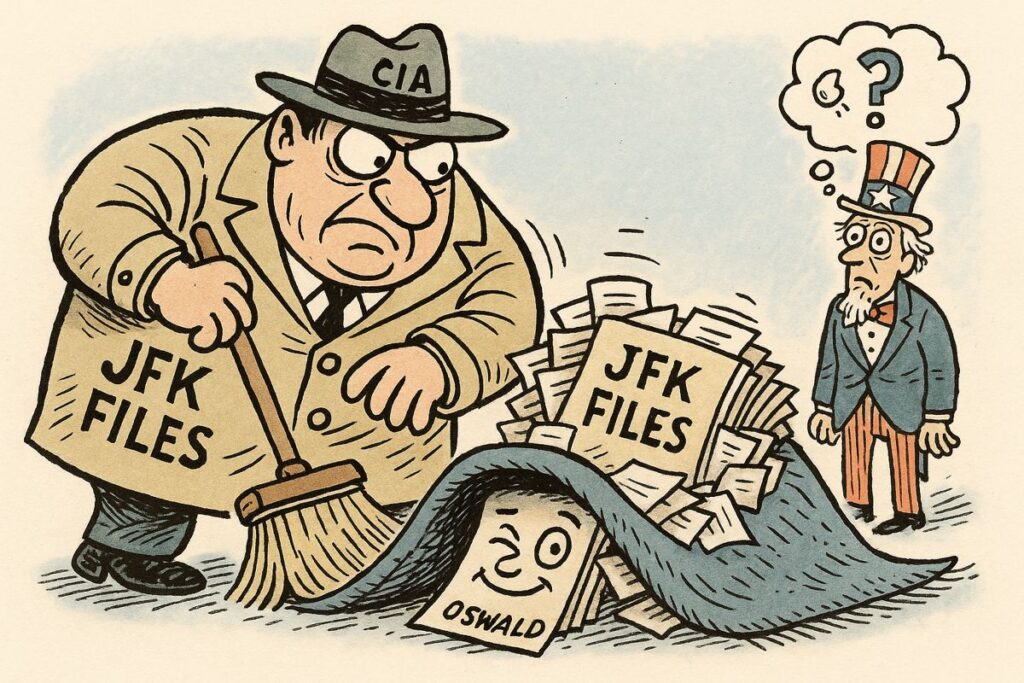Introduction
Recently declassified documents related to the assassination of President John F. Kennedy have revealed a startling pattern of deliberate deception by the CIA regarding their knowledge of Lee Harvey Oswald prior to the tragic event. For nearly sixty years, the agency repeatedly denied any connection to Oswald, but newly released files expose direct operational contact between Oswald and a CIA officer specializing in psychological warfare. These revelations not only reshape the narrative of one of the most scrutinized events in American history, but also raise profound questions about institutional trust, transparency, and the ways that public perception can be manipulated by those in power.
CIA’s Hidden Ties to Oswald
Among the most significant findings is the confirmation that a CIA officer with expertise in psychological operations had direct contact with Lee Harvey Oswald prior to the assassination. This stands in stark contrast to decades of official denials. The officer, George Joannides, managed covert operations involving anti-Castro Cuban exiles—a group with documented encounters with Oswald in 1963. Internal agency communications and newly released surveillance reports show that Oswald’s activities, travel, and contacts were monitored much more closely by U.S. intelligence than previously admitted.
Institutional Deception and Delayed Consequences
The pattern of obfuscation by the CIA mirrors the phenomenon of hidden or delayed effects—where the true impact of actions or substances is not immediately visible. Just as alcohol can act as an invisible poison, causing damage without immediate pain or obvious signs, the CIA’s deception was not instantly apparent to investigators or the public. For decades, the agency maintained the façade of ignorance, only for the damaging truth to be revealed much later. This parallel highlights a critical lesson: the harm caused by hidden truths often becomes clear only after significant consequences have unfolded.
Shaping Public Perception: The Danger of False Narratives
The newly uncovered documents emphasize the agency’s efforts to construct and maintain a false public ideology about their relationship with Oswald. This manipulation of the historical narrative shaped public understanding, much as society’s misunderstandings about alcohol are sustained by widely circulated but inaccurate beliefs. As one document notes, “This ideology is just that—an ideology. But reality is different, and that’s where the problem lies.” The persistence of these false narratives—whether about state secrets or the risks of alcohol—demonstrates the powerful role of perception in shaping societal truth.
Implications for History and Trust
The exposure of the CIA’s deliberate misinformation deepens mistrust in official accounts and highlights the fragility of historical truth in the face of institutional secrecy. Historians and researchers are now called to reassess critical aspects of the JFK assassination investigation, factoring in these new revelations about psychological operations and intentional obfuscation. The lesson extends beyond this case, serving as a cautionary tale about the dangers of accepting official narratives at face value, whether regarding matters of national security or public health.
Conclusion
The newly released JFK assassination files underscore the enduring importance of transparency, vigilance, and skepticism toward institutional narratives. The parallel between the hidden damage caused by alcohol and the long-concealed truths of the CIA’s involvement with Oswald illustrates how delayed recognition of harm can shape the course of history and public well-being. Both cases remind us: what is invisible or denied today may ultimately prove to have the greatest impact on our collective reality.



